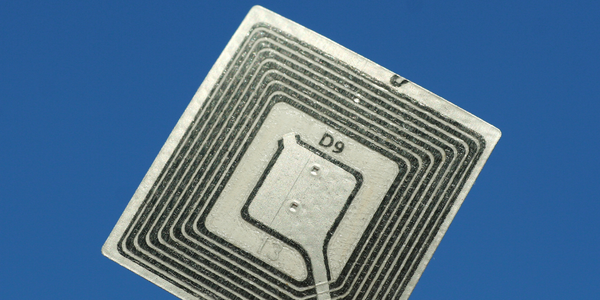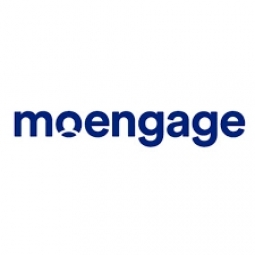Technology Category
- Cybersecurity & Privacy - Identity & Authentication Management
- Cybersecurity & Privacy - Intrusion Detection
Applicable Industries
- Apparel
- Consumer Goods
Applicable Functions
- Procurement
- Sales & Marketing
Use Cases
- Behavior & Emotion Tracking
- Livestock Monitoring
Services
- Testing & Certification
About The Customer
6thStreet.com is the e-commerce arm of The Apparel Group, one of the largest retailers in the world, headquartered in Dubai. The company had registered a significant growth in sales during the 2018 Black Friday season, indicating a shift in consumer behavior towards an omnichannel experience. The CEO of 6thStreet, Dharmin Ved, set an ambitious goal of driving 10x growth, which required a key focus on Customer Relationship Management (CRM). The company was using different tools for sending SMS, emails, mobile push notifications, and in-app messages, which operated in silos, making it difficult to deliver a meaningful omnichannel experience.
The Challenge
6thStreet.com, the e-commerce arm of The Apparel Group, was experiencing a significant growth in sales, indicating a shift in consumer behavior towards an omnichannel experience. The CEO set an ambitious goal of driving 10x growth, which required a key focus on Customer Relationship Management (CRM). However, the team faced challenges in understanding consumer behavior, journey, likes, preferences, and buying patterns due to the use of different tools for sending SMS, emails, mobile push notifications, and in-app messages. These tools operated in silos, making it difficult to get complete visibility into the consumer journey, map consumer behavior across channels, and deliver a meaningful omnichannel experience. It was clear that they needed to modernize their tech stack.
The Solution
6thStreet chose MoEngage at the beginning of 2019 to modernize their tech stack. MoEngage had demonstrated ability to handle scale and had several large clients in the GCC region, making it the preferred partner. The CRM team adopted a clear 12 months roadmap to drive rapid growth. They leveraged MoEngage to deliver a superior consumer experience and personalized marketing communication by capturing every consumer interaction on their website, mobile app, and email. They segmented consumers based on their lifecycle stage, preferences, and behavior, and engaged them with personalized messages across multiple channels. They also enabled data-driven decision making by analyzing every swipe, click, and tap on their digital properties to understand consumer product preferences, campaign performances, and more. They used MoEngage's powerful analytics capabilities to map the consumer journey and identify friction points at each stage.
Operational Impact
Quantitative Benefit

Case Study missing?
Start adding your own!
Register with your work email and create a new case study profile for your business.
Related Case Studies.

Case Study
Fire Alarm System and Remote Monitoring Sytem
Fire alarm systems are essential in providing an early warning in the event of fire. They help to save lives and protect property whilst also fulfilling the needs of insurance companies and government departments.Fire alarm systems typically consist of several inter-linked components, such as smoke detectors, heat detector, carbon monoxide, manual call points, sounders, alarm and buzzer. The fire alarm system should give immediate information in order to prevent the fire spread and protect live and property.To get maximum protection a shoe manufacturer in Indonesia opted for a new fire alarm system to monitor 13 production sites spread over 160 hectars. Although the company had an existing fire alarm system, it could not be monitored remotely.It was essential that the new system would be able to be monitored from a central control room. It needed to be able to connect to the existing smoke detector and manual call point. Information should be easily collected and passed on to the Supervisory Control and Data Acquisition (SCADA) system. Furthermore, the system should have several features such as alarm management, auto reporting, being connected to many client computers without additional cost, and run 24/7 without fails. The company also needed a system which could be implemented without changing the architecture of the existing fire alarm system.

Case Study
IoT Applications and Upgrades in Textile Plant
At any given time, the textile company’s manufacturing facility has up to 2,000 textile carts in use. These carts are pushed from room to room, carrying materials or semi-finished products. Previously, a paper with a hand-written description was attached to each cart. This traditional method of processing made product tracking extremely difficult. Additionally, making sure that every cart of materials or semi-finished products went to its correct processing work station was also a problem. Therefore, the company desired an intelligent solution for tracking assets at their factories. They also wanted a solution that would help them collect process data so they could improve their manufacturing efficiency.
.png)
Case Study
Improving Vending Machine Profitability with the Internet of Things (IoT)
The vending industry is undergoing a sea change, taking advantage of new technologies to go beyond just delivering snacks to creating a new retail location. Intelligent vending machines can be found in many public locations as well as company facilities, selling different types of goods and services, including even computer accessories, gold bars, tickets, and office supplies. With increasing sophistication, they may also provide time- and location-based data pertaining to sales, inventory, and customer preferences. But at the end of the day, vending machine operators know greater profitability is driven by higher sales and lower operating costs.

Case Study
Retailer Uses RFID Scanner to Improve Efficiency
Patrizia Pepe wished to improve the logistics of their warehouse: accepting incoming goods from their production sites, movement of items throughout
the warehouse, and packaging of goods for distribution to the retail locations. They initially tried to use barcodes for this function. Because barcodes must be individually scanned within a line-of-sight, the acceptance of goods coming into the warehouse was too time consuming. Working with the University of Florence, Patrizia Pepe instituted a five-month pilot project beginning in August of 2009 to test the validity of an RFID solution. The pilot involved tagging of about 60,000 items for the second seasonal collection, and convinced the company to move forward with tagging all items.









